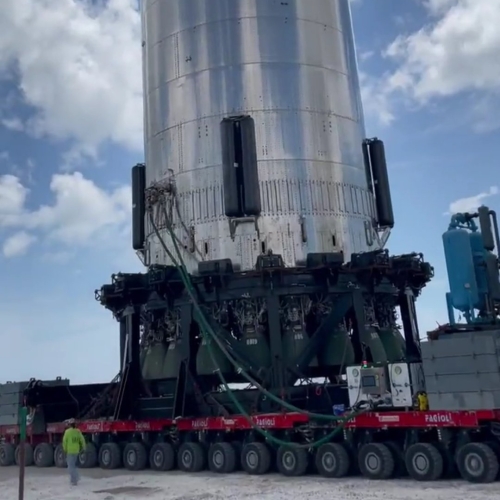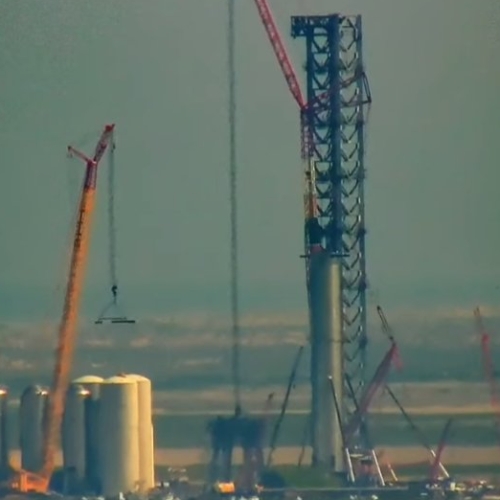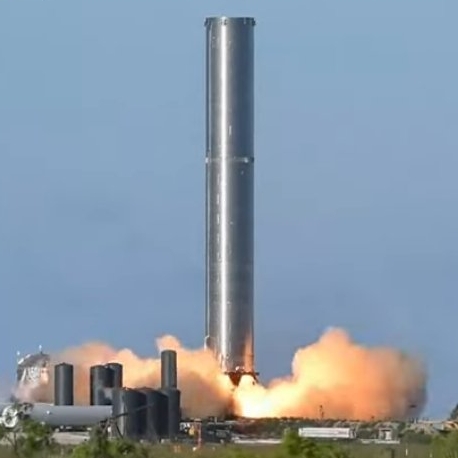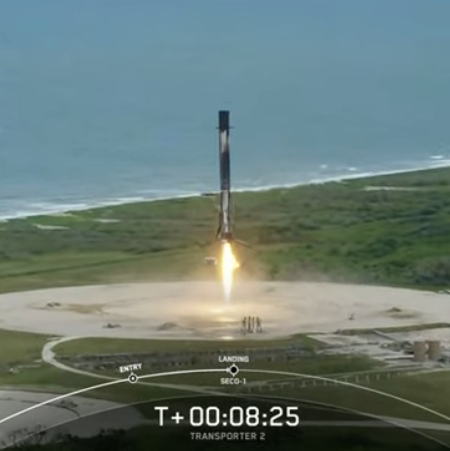SpaceX stacks Starship on top of Superheavy
Capitalism in space: Only three days after the company had rolled Superheavy prototype #4 to the launchpad, SpaceX today stacked Starship prototype #20 on top, uniting for the first time the entire rocket.
All told, the rocket is 395 feet high, about 32 feet taller than the Saturn-5.
The photo to the right, reduced slightly to post here, was posted by Elon Musk earlier today. It also makes obvious several things that will be different for this Starship flight compared to the previous suborbital hops. Starship’s dark exterior is because it is covered with thermal tiles designed to protect it as it returns to Earth flying through the atmosphere at orbital speeds.
Note also the grid fins on Superheavy. Apparently they will be open during the entire flight, instead of unfurling shortly after stage separation as is done with Falcon 9.
I am not sure what the vertical attachments near the bottom of Superheavy are for. The plan is for the stage to land in the Gulf of Mexico, so it does not need landing legs. Could these be attachment points for holding the rocket to the launchpad?
I have been predicting a late September/early October date for this rocket’s first orbital launch test. SpaceX is sure working hard to beat that timeline. They still need to do tank tests and static fire tests of the whole assembly, but based on past schedules, they might get this done in only a few weeks. If so, it means they might be able to launch before the end of August.
My god, if only other American rocket companies worked in this manner. Imagine what wonders they all could accomplish.
Capitalism in space: Only three days after the company had rolled Superheavy prototype #4 to the launchpad, SpaceX today stacked Starship prototype #20 on top, uniting for the first time the entire rocket.
All told, the rocket is 395 feet high, about 32 feet taller than the Saturn-5.
The photo to the right, reduced slightly to post here, was posted by Elon Musk earlier today. It also makes obvious several things that will be different for this Starship flight compared to the previous suborbital hops. Starship’s dark exterior is because it is covered with thermal tiles designed to protect it as it returns to Earth flying through the atmosphere at orbital speeds.
Note also the grid fins on Superheavy. Apparently they will be open during the entire flight, instead of unfurling shortly after stage separation as is done with Falcon 9.
I am not sure what the vertical attachments near the bottom of Superheavy are for. The plan is for the stage to land in the Gulf of Mexico, so it does not need landing legs. Could these be attachment points for holding the rocket to the launchpad?
I have been predicting a late September/early October date for this rocket’s first orbital launch test. SpaceX is sure working hard to beat that timeline. They still need to do tank tests and static fire tests of the whole assembly, but based on past schedules, they might get this done in only a few weeks. If so, it means they might be able to launch before the end of August.
My god, if only other American rocket companies worked in this manner. Imagine what wonders they all could accomplish.









